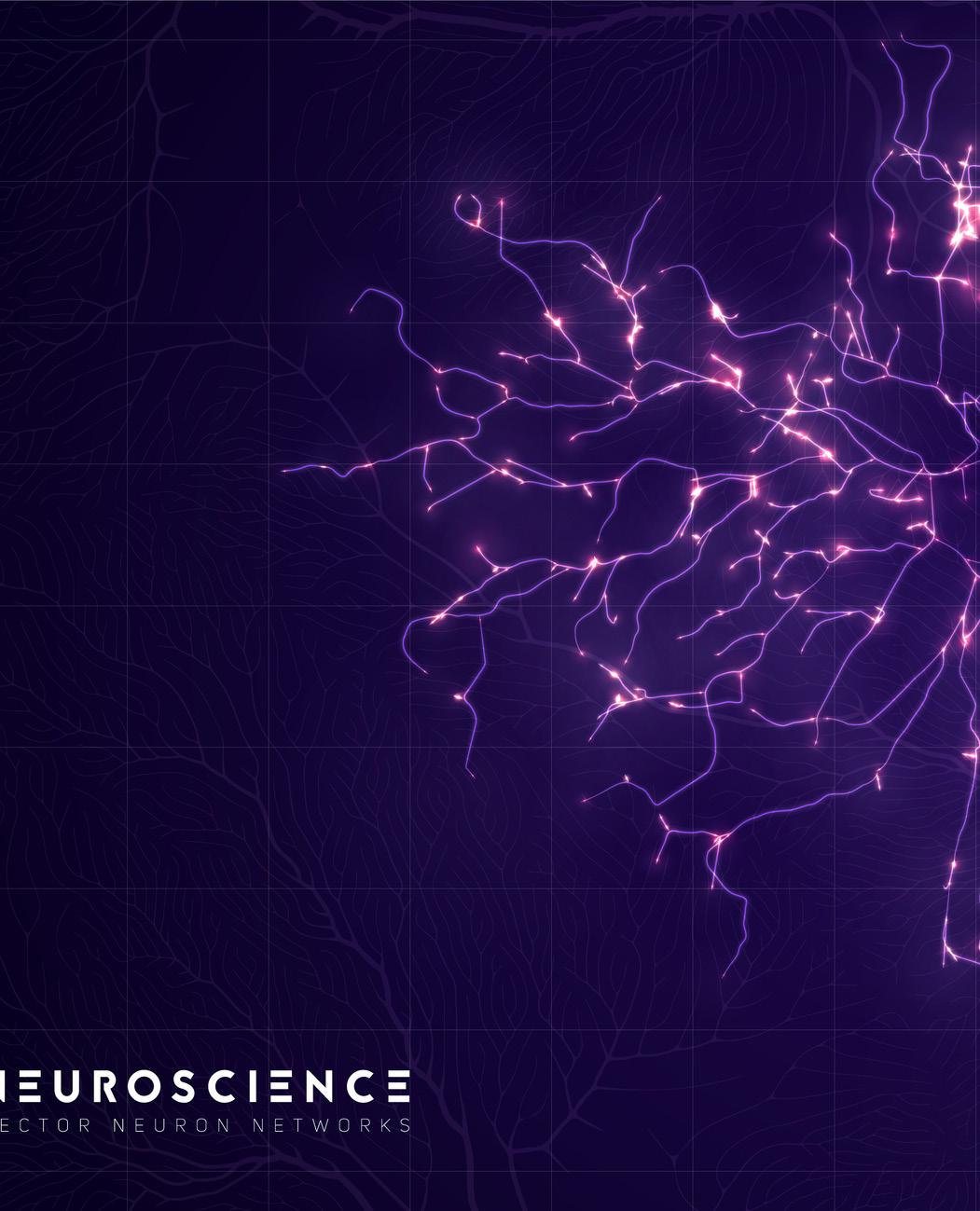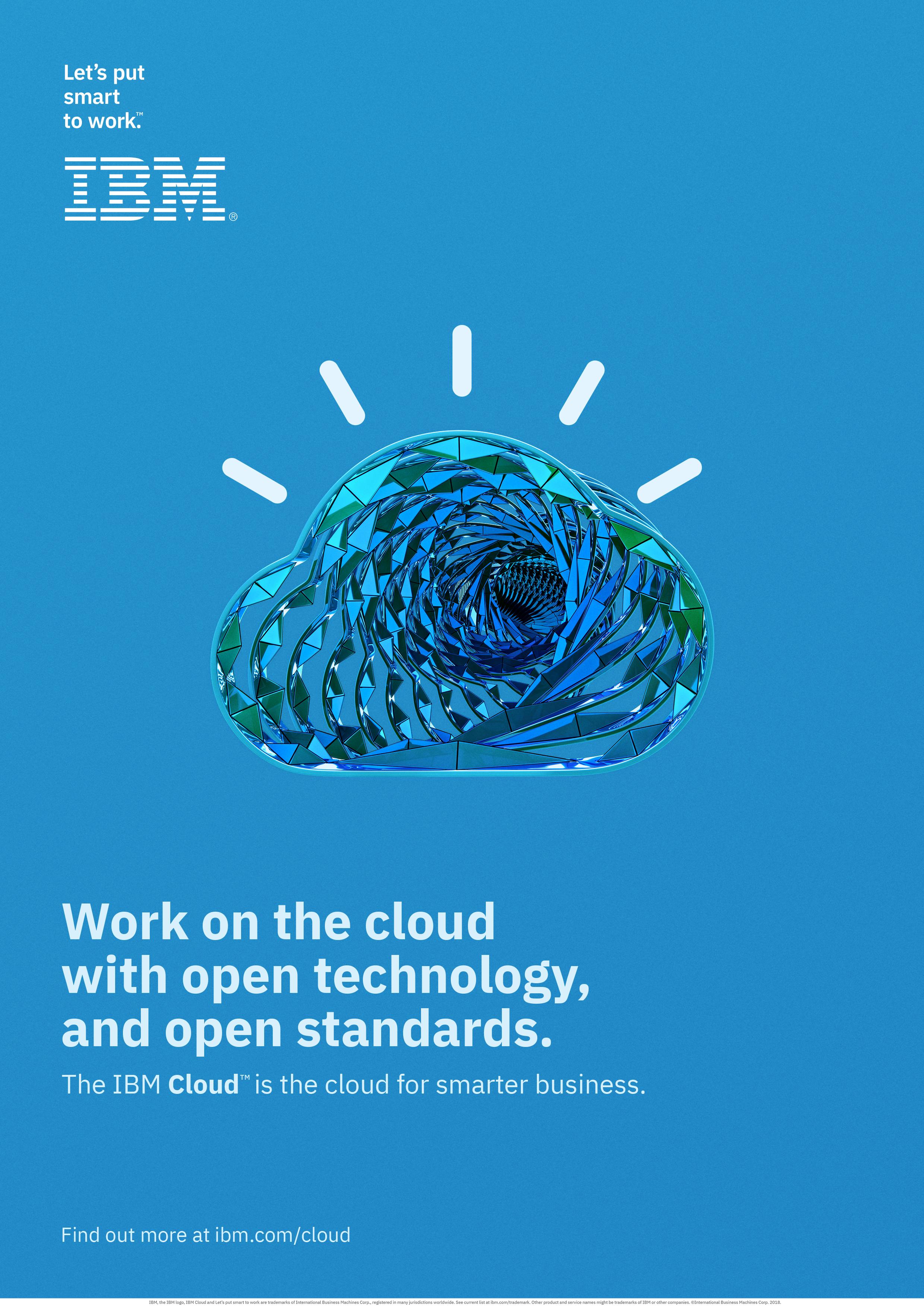THE







Rather than searching in keywords, people are increasingly looking to discover content in new, more immersive ways. Improving AI will be key in providing consumers with a better experience.
As consumers’ habits change, the use of visual search is becoming increasingly prevalent. Core Google services, including Search and Maps, are also being impacted by a growing preference for social media and videos as the first stop on younger users’ path to discovery, according to Senior Vice President Prabhakar Raghavan.


By combining computer vision and natural language processing, visual search can overcome the inherent limitations of traditional keyword search.
Increasingly, rather than searching in keywords, people are looking to discover content in new, more immersive ways. Today’s consumers shop with their mobile devices and are influenced to purchase through video reels on social media, meaning AI has a key role to play.
All of this should help the market’s growth: it’s projected to surpass US$14.72bn by 2023, and a third of US adults under 35 had used visual search for shopping as of August.
MARCUS LAW
marcus.law@bizclikmedia.com

“By combining computer vision and natural language processing, visual search can overcome the inherent limitations of traditional keyword search”















What is the meaning of happiness? Why not ask AI Buddha, a tool that brings spiritual guidance from ancient scriptures to your smartphone.
The AI Buddha, developed with academics at Kyoto University, is also intended as a therapeutic distraction from "the increasingly stressful real world" – from COVID-19 to the war in Ukraine.
AI image generation tool DALLE-2 was opened to the public on 28 September, allowing anyone to create images
Users of DALLE-2 after program was opened to the public
Images created every day by DALLE-2 users
“This push to ensure stateof-the-art training and education in AI has never been deemed as critical nor as timely as it is today”
Brett Vaughan Chief AI Officer,. US Navy“You can embed all kinds of machine learning – whether it's a custom-built machine learning model, computer vision, or a document”
Boris Krumrey Global VP Automation Innovations UiPathAI robot Ai-Da made history as the first robot to ever speak in the House of Lords, where she discussed the future of the nation’s creative industries and AI’s place within them. At a groundbreaking parliamentary committee, Ai-Da answered the peers’ questions about how technology has the potential to reshape the UK’s creative industries.
Supply chain robotics company Gather AI has landed a $10mn Series A financing round for its work with autonomous warehouse drones powered by artificial intelligence. Gather AI says an estimated US$150bn is currently lost every year as a result of the problem of misplaced inventory, which they hope to solve with off-the-shelf drones paired with AI software.
Researchers in the United States have developed a new set of algorithms that predict volleyball players’ in-game actions with more than 80% accuracy, opening up a wealth of new opportunities for human-machine interaction. The new algorithms developed in Cornell University’s Laboratory for Intelligent Systems and Controls combine visual data with information that is more implicit, which might include an athlete’s specific role on the team.
Adobe unveiled a host of tools harnessing the power of AI at MAX 2022, where CEO Shantanu Narayen described how the company is determined to develop "AI for social good". As part of that commitment, it has now made Adobe Express entirely free for non-profits.
Nearly all business leaders agree artificial intelligence (AI) is critical to business success over the next five years, according to new research, with 79% having already deployed three or more AI apps in the workplace.
Deloitte's State of AI in the Enterprise surveyed 2,620 global business leaders, representing six industry areas, and found 94% of respondents agreed AI is critical to success. However, the research also discovered a 29% increase in the number of respondents who self-identify as "underachievers", and Deloitte says this suggests many organisations struggle to achieve meaningful AI outcomes.
"Amid unprecedented disruption in the global economy and society at large, it is clear today's AI race is no longer about just adopting AI,” says Costi Perricos, Deloitte Global AI and Data leader. “But is instead about driving outcomes and unleashing the power of AI to transform business from the inside out."
Oracle and Nvidia have formed a multi-year partnership to help customers solve business challenges with accelerated computing and AI. The collaboration aims to bring the full Nvidia accelerated computing stack – from GPUs to systems to software – to Oracle Cloud Infrastructure (OCI).
Research from the Penn State College of Information Sciences and Technology shows algorithms behind natural language processing (NLP) often have tendencies that could be seen as offensive or prejudiced towards individuals with disabilities.

US-based Clearview AI has been hit by the maximum fine possible in France for breaching General Data Protection Regulation (GDPR). The firm scrapes selfies and other personal data off the Internet without consent to feed an AI-powered identitymatching service.
The first VR head-mounted display (HMD) system, The Sword of Damocles, is invented by computer scientist Ivan Sutherland and student Bob Sproull. Connected to a computer, it is capable of showing simple, virtual wireframe shapes that change perspective when the user moves their head.
Virtuality is launched: VR arcade machines where gamers can play in a 3D-gaming world. Virtuality pods feature VR headsets and real-time immersive stereoscopic 3D images, and can be networked together for multi-player games. The same year, SEGA reveals it is working on a VR headset of its own.
Entrepreneur Palmer Luckey creates the first prototype of the Oculus Rift headset. It features a 90-degree field of vision and relies on a computer's processing power to deliver images to the user.
Two years later, Luckey launches a Kickstarter programme that raises US$2.4mn.
Oculus is bought by Facebook for US$2bn. The same year, Sony announced it is working on Project Morpheus, a VR headset for the PlayStation 4 (PS4).
Meanwhile, Google releases the Cardboard – a do-ityourself stereoscopic viewer for smartphones – and Samsung announces the Samsung Gear VR, a headset that uses a smartphone as a viewer.
Meta’s Quest Pro, according to the company, represents a whole new way to work, create and collaborate. Revealed at Meta Connect 2022, the headset marks a shift away from more traditional virtual reality into one that blends virtual and augmented reality pioneered by devices such as Google Glass.
The shift from tethered to standalone VR headsets represents a major shift. Also this year, Road to VR reports that the monthly-connected VR headsets on Steam surpassed one million for the first time.
Nintendo enters the VR market with the Labo: VR kit for Nintendo Switch.
Released in October, Meta’s Quest Pro is the company’s most powerful and advanced headset yet. AI Magazine looks into the history of VR
Formed out of the ashes of another startup, Sonalight, Amplitude was created to help companies build better products through product analytics.
“Before co-founding Amplitude, one of my co-founders, Curtis Liu, and I tried to build a different company called Sonalight,” says Amplitude CEO Spenser Skates, who studied bioengineering at MIT where he won Battlecode, MIT’s largest programming competition – not once, but twice.
“We were building a voice recognition app, like Siri, but eventually realised we were a little too early,” he says. “But, while building Sonalight, we made an important discovery: most companies had no idea how their customers were using their products.
“We had built a platform to give us visibility into which Sonalight features our users liked, where they were getting stuck, etc., and we realised that the solution was actually more valuable than Sonalight itself. So we shut
down Sonalight and put all of our focus into the solution – Amplitude.”
Now, 10 years later, Amplitude is the #1 ranked product analytics solution, and it now has more than 1,800 customers, including Atlassian, Chick-fil-A, Marks & Spencer, NBCUniversal, Shopify, and Under Armour, who all rely on Amplitude to gain self-service visibility into the entire customer journey.
“We want to help every company use product data to drive their business,” Skates explains. “What Adobe is for marketing teams and Salesforce is for sales teams, Amplitude is for product teams. We’ve also expanded beyond product analytics. We help companies with experimentation, help marketing teams understand the entire customer journey, and recently launched the industry’s first insights-driven CDP.”
As Skates explains, it’s more important than ever for companies to have a deep understanding of how customers interact with their digital products.
Last year, Amplitude was named by AWS an Artificial Intelligence for Data Analytics
talks to AI Magazine about
out of a voice recognition
solving the problem of knowing what users want
Name: Spenser Skates Job Title: CEO and Co-Founder Company: Amplitude
While building Sonalight, we made an important discovery: most companies had no idea how their customers were using their products ”

(AIDA) solution: augmenting analytics with machine learning to bring personalisation at scale to the enterprise.
“What people do with a product is a far stronger signal of what they want than what they tell us,” Skates comments. “Our Digital Optimisation System helps teams deeply understand digital customer behaviour, predict which features and actions lead to business outcomes, and adapt each experience in real-time to maximise impact.
“This is all critical to driving business growth, especially in a down market. Product data can connect the things companies are building – a new feature, a new release, a new campaign – directly to revenue and retention. That’s incredibly powerful because it ties the work product teams are doing to the success of the business. It makes the product organisations the revenue centre.”
The main issue in product development: knowing what customers want
Knowing what customers want sounds simple, but it is incredibly difficult, says Skates.

“If you get this right, you’ll do great,” he explains. “If you don’t, it doesn’t matter what else you do. If you’re measuring downloads, web visits, and total users, you may think you know what your customers want. The problem is that these are all vanity metrics –they can give you a summary of what people are doing, but they don’t tell you why. This is what we call the product gap at Amplitude.
“The answer to the product gap is datadriven products. Armed with this, you can learn exactly what customers are really doing by monitoring their behaviours, taking this rich data to test, learn, validate, and evolve your product. No more guesswork; you can build products that anticipate and deliver every single time. With data-driven products, there is no longer a big gap between what people want and what products do. Now, technology adapts to people instead of the other way around.”
There are plans to grow the team while on the road to becoming a world-class company, says Skates, on part of the mission to provide a real-time, all-in-one digital analytics solution that equips companies with critical customer insights
“This means continuing to roll out new products and features that help our customers reach critical insights faster and, ultimately, make better business decisions,” Skates concludes.
“We also plan to grow our team. We want to become a world-class company, and that starts with a world-class team. Currently, we have open roles across all our teams and across the globe, including several open roles in Europe and specifically in London. We want fast-moving, hard-working, status quo-challenging individuals who will continue to elevate our teams and help us become a world-class organisation.”

“ We want to help every company use product data to drive their business. What Adobe is for marketing teams and Salesforce is for sales teams, Amplitude is for product teams”

Jasmeet Singh is Executive Vice President and Global Head of Manufacturing at Infosys, a global leader in next-generation digital services and consulting. Jasmeet is responsible for overseeing and growing client relationships in the Automotive, Aerospace, Defence and Industrial Manufacturing sectors.
Q. How will metaverse technologies such as AI, IoT, AR enable an improved experience for manufacturers?
» Metaverse technologies are changing the game for manufacturers. From the way we make products to the way we manage them, there are some fundamental shifts underway thanks to AI, IoT and AR.
The confluence of these technologies is enabling manufacturers to envision products and factories digitally before manifesting them physically.
There are many interesting use cases in play already.
Let’s start with design. The metaverse enables you to test as you build. This is important because of the extensive embedding of software in products, which has made product design far more complex.
With metaverse technologies becoming more accessible and affordable, it will be possible for more manufacturers to simulate various scenarios, allowing teams to continually improve success rate when introduced into the market, while also keeping its lifecycle cost under control.
Beyond product quality, metaverse technologies are enabling a range of innovative solutions. For example, in aircraft manufacturing, there’s a need to correctly assemble thousands of fasteners. By sensing live video feeds and applying mixed reality, the factory technician can be alerted to a missing part. On the selling side, manufacturers are making life easier for customers via 3D rendering of products enabling an easier configure-price-quote process. On the field service front, maintenance technicians are being enabled with machine-vision-driven visual inspection with overlaid sensor and repair information.
From AI and IoT to AR, there are some fundamental shifts underway in the manufacturing industry thanks to metaverse technologies
» At Infosys, we cover the entire journey of a metaverse solution, right from incubation to innovation and industrialisation, viewing the metaverse as part of a much larger digital wheel for the manufacturing industry. This includes the Infosys Centre for Emerging Technologies (iCETS), which consists of a team of researchers who are constantly scanning and applying emerging technologies to address business pain points across key industries, including manufacturing.
It also comprises our Virtual Living Labs ecosystem, which can apply multiple technologies when creating more than 25 futuristic experiences for our customers.
And, finally, we run innovation ‘Centres of Excellence’, partnering with some of our key manufacturers. Taking a failfast approach, these centres take on a customer-specific set of business challenges, rapidly developing solution prototypes for testing and industrialisation.
» There is tremendous potential for digital twins, which may start to hit critical mass soon as it becomes more affordable, skillsets become increasingly pervasive and digital twins become an integral part of the value chain – from product design to warehouse management. The post-COVID era has seen organisations turn their focus to resiliency to ensure they can spring back from unforeseen circumstances, whether it’s natural disasters or pandemics. Digital twins will play a key role in stress-testing facilities and supply chains for their preparedness.
Q. In what ways is Infosys responding to this shift towards a more digitally-enabled manufacturing industry?
Q. How important are digital twins to the future of the industry? How do you expect they will improve manufacturing processes further?
“The post-COVID era has seen organisations turn their focus to resiliency to ensure they can spring back from unforeseen circumstances, whether it’s natural disasters or pandemics. Digital twins will play a key role in stress-testing facilities and supply chains for their preparedness”
» AI and digital twin technology cannot be seen as two separate technologies; they’re integral to one another’s fabric and functionality. Think of the enterprise like a living entity: IoT and AI makes digital twins close-looped by providing realtime feedback based on inputs from sensors, like how we send, feel and respond to stimuli. Digital twins are mathematical models that can represent the real world and conduct ‘what-if’ type of scenario analyses, with the sensory data being sent to them. AI acts as a brain within the enterprise, interpreting the data gathered by the sensors and processed via digital twins. As an example, AI can conduct the planning based on data sets fed into a supply chain digital twin. Or it can be used for predicting maintenance based on a connected equipment digital twin.
» Manufacturing is becoming a frontrunner in terms of AI and technology adoption. We expect AI to be deployed across manufacturing quality control processes, including those with visual inspection, process optimisation and customer experience. In fact, we can already see this from the development and uptake of vehicle autonomy in the manufacturing industry. As an example, in factories and warehouses, we already see vehicles, both driver and driverless, operating in controlled geo-fenced environments to help move material more efficiently and safely around.
The most interesting part of all this is yet to be realised, and that is the promise of Industry 4.0, where these varied initiatives and applications will converge to create truly meaningful and impactful combinations, and – dare I say it – herald the arrival of Industry 5.0 with sentient manufacturing.
Q. How does AI support the use of digital twin technology?
Q. What can we expect from the manufacturing industry in terms of AI and technology adoption?
Digital twins are already playing a key role in stresstesting facilities and supply chain readiness. According to Gartner, one-third of midto-large size organisations that have implemented IoT would have implemented at least one COVID-19motivated use case for a digital twin by 2030.






If Hollywood were reality and depicted the use of AI within the US Navy, it would no doubt be a certified blockbuster. While art often imitates life, the use of AI within the US armed forces is still an evolving space. Rapidly advancing technologies that have the potential to convey increased capability also convey challenges. This challenge space, for the US Navy, belongs to Mr. Brett Vaughan.


Chief AI Officer for the US Navy, Brett Vaughan has been involved with security, defence and the military applications and implications of AI across several years. Although he modestly states that his greatest skill lies in communicating with various departments about the benefits of AI rather than the nuts and bolts of its coding, he is clearly a leading global authority on the benefits of this cutting-edge technology within the defence and military space.
A civilian who originally qualified as a cartographer but went on to cut his teeth in military intelligence at the Pentagon, Vaughan is no stranger to balancing the potential of AI with the strictly classified protocols of military management. “It’s an expansive role. It essentially means I'm part ambassador, strategic communicator, and architect for AI for the service. My purview spans our Navy's war fighting capabilities, our readiness, our corporate activities, and
While the US Navy implements widespread AI initiatives, we spoke to their Chief AI Officer, Brett Vaughan
our training and education as they relate to AI. Essentially, anywhere the service is interested in designing, developing, or deploying AI-enabled activities or capabilities, that falls in my job jar.”
How AI capabilities have developed in the US Navy

There’s a long history of cutting-edge technology use within the US Navy. According to Vaughan, the Navy's experience with AI goes all the way back to the discipline’s inception in the 50s. The bulk of the US Navy’s experience in AI from then until now has been predominantly in the research and development (R&D) arena. During that time, US naval technologists established themselves as global leaders in terms of their expertise in the field of AI.
“We established a Navy Centre for AI Research at the Naval Research Lab in 1981,” says Vaughan. “And today, if you went to find our AI rockstars, our geniuses within the Navy community, that's where you'd find most of them; however, I think many would be surprised to find AI activity in almost every sector of the service.”
Example of an image caption BRETT VAUGHAN CHIEF AI OFFICER,US NAVY
“Essentially, anywhere the service is interested in designing, developing, or deploying AI-based activities or capabilities, that falls in my job jar”

LOCATION: ARLINGTON, VIRGINIA, UNITED STATES
Mr. Brett Vaughan assumed the role of Navy Chief AI Officer in December 2019 under the Navy’s Office of Digital Transformation (SECNAV OCIO / OPNAV N09D). Prior to that he was in, and still holds, the position of Artificial Intelligence Portfolio Manager for the Office of Naval Research (ONR). He is responsible for shaping and informing Navy plans, policies and position on Artificial Intelligence and the alignment and coordination of AI work across ONR. He is the principal agent for AI-focused engagement on behalf of ONR, the Chief of Naval Research, the Chief of Naval Operations and the Secretary of the Navy.
Prior to joining ONR, Mr. Vaughan served as Science and Technology Integration and Innovation Lead on the Chief of Naval Operations Staff, OPNAV N2N6FX, Information Warfare from 2010 - 2019. Responsible for driving science and technology (S&T) gain across the Information Warfare portfolio, support to strategic S&T decision-making and related technology outreach and engagement. His previous assignment was Section Head for Technology Outreach under the Knowledge Dominance Directorate of N2N6. Mr. Vaughan entered Navy civilian service in June 2009, attached to the Strategy and Concept Development branch of OPNAV N20, where he was responsible for technology strategy development and concept innovation.
Prior to joining the Department of the Navy, Mr. Vaughan spent a twenty-year career with the National GeospatialIntelligence Agency (NGA). Prominent assignments with NGA included: NGA Pentagon Liaison Division Chief, NGA Defense (2009-2010); NGA Liaison to the CNO N2 Staff (2003-2009); NGA Liaison to the JCS Joint Staff (1997-2002) and Operations Engineer (1995-1997). Mr. Vaughan entered federal service in 1989 after working as a cartographer for the City of Virginia Beach Mapping and Surveying Department.
Mr. Vaughan is a distinguished graduate of the U.S. Naval War College, earning a Master of Arts in National Security and Strategic Studies. He also holds a Master's Degree in Environmental Science from Johns Hopkins University and a Bachelor's Degree in Geography from the University of Mary Washington where he also completed five semesters of Russian language studies.
His honours and awards include the Meritorious Civilian Service Medal, the Joint Meritorious Unit Citation (two awards), the James V. Forrestal Award for Excellence in Strategy and Force Planning, the Marine Corps Association Writing Award, the NIMA Superior Service Medal, the DCI Meritorious Unit Citation and several letters of appreciation and commendation from OSD and the JCS Joint Staff.
Currently, the US Navy is actively designing and developing over 1000 AI-related activities. “I think most would be surprised to the degree at which AI is being groomed and developed within the Navy,” Vaughan confirms. “But a majority of those efforts reside in the R&D realm, and so in the highly-technological and competitive landscape of the modern era we are prioritising the accelerated progression of those capabilities to the fleet.”

While Vaughan is limited in terms of the information he can impart on the Navy’s many AI projects, he is able to offer a broad perspective, including some of its use case areas. He says there are two areas where AI predominantly manifests within the US Navy: “AI enables a certain level of autonomy in unmanned/robotic systems (drones to most) and also fuels a wide array of decision aids, designed to augment, improve and speed human decision-making.”


“The approach of the US Navy toward AI is chiefly one of intelligent autonomous systems and decision aids augmenting the human, not replacing them, in most cases - it's very much a hybrid approach”
NAVY
HII supports U.S. warfighter missions around the globe, partnering across domains on the edge at hyperspeed, using what’s new to preserve what’s always been worth protecting. What our builders and technologists have practiced over 135 years remains our north star—delivering the hard stuff, done right.

Todd Borkey, Chief Technology Officer at HII’s Mission Technologies division, shares how the company is working with the U.S. Navy
HII is an all-domain defence and technologies partner, recognized as America’s largest shipbuilder.
With a 135-year history of trusted partnerships in advancing U.S. national security, HII delivers critical capabilities ranging from powerful naval ships, to unmanned systems, ISR and AI/ML analytics.

The company is America’s only builder of nuclearpowered aircraft carriers and leading provider of mission-driven defence technologies. Todd Borkey, Chief Technology Officer at HII’s Mission Technologies division, explained: “We have a century-long partnership with the U.S. Navy. In addition to building some of the state-of-the-art warships, we also happen to be
number one in Live, Virtual, and Constructive (LVC) synthetic training, where we prepare Naval war fighters for virtually every conceivable situation they could experience.”
Borkey explained how HII is becoming very datadriven, with gains in digital ship building, C5ISR, artificial intelligence and modelling simulation.


“We consider ourselves practitioners of AI. We develop a wide range of AI applications across RF sensing, C5ISR, cyber operations, LVC training and logistics. We were one of the first companies to integrate computer vision into operational ISR, and deploy modern natural language processing to a mission at scale. We have hundreds of data
scientists and engineers who exploit big data and operationalise AI.”
A trusted developer of big data solutions at enterprise scale, HII is going to continue to innovate AI architectures that improve signal extraction from a wide range of client big data sets.
“Our future is going towards what we call neuro-symbolic AI, and that allows us to leverage subject matter expertise and overcome some of the issues that are encountered by pure deep learning approaches,” concluded Borkey.
LEARN MOREImproving human performance across the board is a very apt description of the US Navy’s aim for AI. Improving safety, elevating operational and corporate efficiency and reducing risk are hallmarks of this approach. The Navy’s accelerated adoption of AI, explains Vaughan, requires not only technical acumen but also a non-negotiable focus on the human aspects of AI development and deployment, with specialists constantly honing and improving the AI-enabled capabilities. The goal is to consistently improve functionality and safety for human personnel, as well as provide operational commanders with broader options of capability. “Thus, for example, instead of deploying an all-manned force for a particular operation or function, that commander may be able to weave in autonomous/robotic systems into his/her capability mix; what our Chief of Naval Operations calls a 'hybrid fleet'.”


But it's not all about frontline operations. There are, notes Vaughan, many practicalities that can be served in terms of the operational management of the US Navy. This is especially true when it relates to manual labour. “It’s what we call the dull, dirty and dangerous, like scraping barnacles off the hulls of ships, or painting ships, or defusing mines, or jobs like that. I'm positive any sailor that has the job of scraping barnacles off the hull of a ship would love to be relieved of that task by a robot. And we have those today. Crawling inside the hull of a ship looking for corrosion is another – you go deep down in a ship, and that's not a very hospitable environment. Machines can in many cases do that quicker, and more effectively, than humans. I like to think of this as a great example where the US taxpayer is getting a much better return on their investment and the Navy increases efficiency at a stroke.”
Another area where AI is being deployed is in decision aids, where humans are assisted in making better and faster decisions.

“Another area where AI is being deployed is in decision aids, where humans are assisted in making better and faster decisions”
Citing these use cases, Vaughan says: “It might be a ship’s navigator, or radar operator underway in the middle of the ocean, or it might be a budget analyst in the Pentagon trying to resolve financial figures. The applications of AI in that context of decision aids are almost infinite and we are giving that potential wide address.”

“In both of those applications, whether it's decision aids or autonomy, we approach AI development as very problem-specific and context-dependent, which drives us to put a premium focus on the inclusion of our core user base, our warfare enterprises, in the design of AI capabilities. That means undersea warfare, surface warfare, aviation, special operations (our Navy SEALs), information and expeditionary warfare all have AI-enabled autonomy and decision aid applications, platforms, and uses.”
And so whether drones or decision aids, a focus on the human element is paramount in the US Navy pursuit of AI capabilities.
Despite the fact that the US Navy has been investigating the potential of AI for the past 50 years, the practical application and integration of the technology has been challenging. Industry, not the federal sector, are at the forefront of AI deployment today and industry models for AI adoption don’t always readily translate to the military. We truly live in a digital era dominated by software. Most companies today are either born digital or can rapidly adopt softwarefocused competencies; the US Navy is 247
“Whether
OFFICER, US NAVY
years old and is challenged to make the transit to a more digital organisation; however, it is a transit that wemust make, says Vaughan, if we are to effectively leverage AI.
The process of developing and deploying AI in this manner is a departure from an institution with a largely industrial legacy and underpinned by practicality, he explains. “Writing requirements for those digital capabilities is one of those challenges, because we've been writing them for industrial purposes for decades, designing, building and operating planes and jets and submarines' hardware. Now, we have to think, talk and act to enable and deploy software; to write, deploy and sustain code to generate the right type of AI capabilities at the appropriate rate and nature of operation.”
It’s a cultural issue that requires careful and strategic handling – a hard task in an environment that, as Vaughan says, simply wasn’t born digital. “If you're a company in Silicon Valley today, chances are that you're born digital; knowing, out of the cradle, how to write software. You know how to check it. You know how to deploy it. You know how to tune it, maintain it and you know how to refresh it and everything that implies. These are new skill sets for the Navy, relatively speaking. So upskilling our sailors and marines to the point where they're more adept at those digital skills, but especially AI, is one of our greatest challenges today.”
AI training within the US Navy is facilitated by the Navy Education Enterprise, which is, the Navy Community College, the Naval Academy in Annapolis, the Naval War College in Newport, and the Naval Postgraduate School in Monterey, California. Plans are in work to increase AI-related


training and education at every one of these centres with the aim of upskilling the fleet and force of today and tomorrow to assure relevance and pacing of technologic development and advantageous position within the geopolitical landscape.
This push to ensure state-of-the-art training and education in AI has never been deemed as critical nor as timely as it is today. According to the final report of The National Security Commission on AI – an organisation chartered by the US government “to consider the methods and means necessary to advance the development of artificial intelligence, machine learning, and associated technologies to comprehensively address the national security and defence needs of the United States - we are now in an age of AI deployment and they have recommended to the US President and Congress that the US Defence Department be AI-enabled by 2025.
Mr. Vaughan bears prime responsibility for helping the US Navy reach that goal. The Navy strategy to achieve AI enablement by 2025 is critically dependent on people and upskilling today’s fleet and force to compete in cyber space while advancing the aims of the service and the nation. That strategy is in constant tension with the global marketplace and the demand for digital skills. But as careers continue to evolve from ‘jobs for life’ into more transient positions, the war on talent is a wholly different battle for the Navy to address.
Vaughan says: “There are offsetting forces at play here. The US Navy offers a sense of mission and duty over that of the commercial sector. It also offers intriguing opportunities to access and tackle challenging operational problems; this is catnip to the AI community. Industry, on the other hand, can offer financial incentives

“This
to ensure state-of-
AI has never been deemed as critical nor as timely as it is today”
that the government cannot match and so yes it is natural to see talent coming in, moving across and sometimes out at a rate that is more dynamic than what we are accustomed to.”
A valuable constant in this equation is the military reserves. Thankfully, because of the ability for former full-time military personnel to become reservists, talent is still retained to a degree. Nevertheless, it's a challenge to be dealt with. “A lot of them, even if they do leave the US Navy, remain reservists and that talent and expertise come back at some point. We keep that pipeline open to be able to recapitalise that experience – the door is always open to welcome them back and leverage their skills as reservists.
“If I walked into the Pentagon today and ran into a junior officer that was wearing the Navy uniform, and he told me he could code artificial intelligence, 9 times out of 10 that person's going to be a reservist. That means they work at Amazon, or at Google, or Microsoft in their civilian jobs and they're a navy reservist in uniform. So I can't overstress or emphasise the importance of the reserves to our strategy, our designs, and our plans for AI.”
It’s worth remembering that the US Navy also has a strong civilian cadre – Vaughan himself isn’t a member of the military –and that means lots of people within the organisation are using their industry-learned skills to transform military operations, too. “On the civilian side, I think we're in terrific shape. Our information warfare community has done a terrific job over the last decade of creating and sustaining a vibrant pipeline of civilians that flow into the Navy with what we call critical AI skill sets, like computer science, statistics, mathematics, data science, data engineering, AI and ML ops.”
He says that now, an important part of AI workforce strategy is elevating the uniformed ranks to a similar level of parity. “We're actually today in the process of developing a robotics rating within the Navy enlisted corps, which will be huge. From there, it grows into ‘how do we advance the Navy rating system to address things like data science and data engineering?’ – which are skill sets core and critical to effective AI deployment. When we talk about moving something from, say, the lab to the fleet or the field, data engineers are paramount. That's one skill set that we're really keen to increase the numbers on.”


“We are in the process of developing a robotics rating within the Navy enlisted corps, which will be huge in terms of instantiating, accelerating and optimising AI impacts on naval operations”
BRE TT V AUG HAN CHIEF AI OFFICER, US NAVYBRETT VAUGHAN CHIEF AI OFFICER, US NAVY

“The algorithm we build for a submariner is going to be different from the one we build for a jet pilot or a ship driver; AI is problemspecific and context dependent in both design and deployment”
The recommendation of the National Security Commission on AI mandates that “by 2025, the foundations for widespread integration of AI across DoD must be in place...” has introduced a heightened importance on time as a factor in the US Navy’s AI calculations. This is a daunting goal from any perspective, and, according to Vaughan, necessitates an expansive adoption strategy across a broad range of disciplines.

It’s a challenge – and, with only three years to go until the deadline, there’s still much work to be done. “The clock is ticking; it’s a very short game clock. We have to rapidly and broadly progress to an elevated posture that is conducive to delivering AI at speed and scale, and all the services have that challenge.”
But scaling itself is tricky, he explains. “The algorithm we build for a submariner is going to be different from the one we build for a jet pilot or somebody on a surface Navy ship. They are different environments and have different data; the transport layers are different; the operations are different. All those elements comprise the ecosystem you need to deploy AI effectively, so it's very important that you tune AI development within the intended use mission or problem set. At the same time you don’t want to get pigeon-holed or siloed in AI approach; you want to be able to extend AI-enabled solutions across the enterprise. In order to bridge this space, to effectively craft AI for the warfighter while setting conditions for broader exploitation, the US Navy has established AI Task Forces in every one of its warfare enterprises –an accomplishment that Vaughan is especially proud of as it provides purchase on the cultural challenges of AI adoption.
Scaling AI means that “if somebody has developed AI capabilities, say for submariners, I can now take that solution and extend it to other pieces of the enterprise and potentially boot-strap other warfare enterprises as well. Scaling means efficient recapitalisation; not reinventing the wheel every time you develop an AI pipeline or a piece of code, you can leverage or recapitalise that work across the enterprise.”
Vaughan says that it's essential to have the team skilled enough to undertake the task. But that team must also have a viable, resilient and robust digital fabric underneath. He points out that AI is very heavily reliant on compute, such as cloud and highperformance compute assets, transport layers, and the network.
“You have to move ones and zeros around from where they're collected to where they need to be processed, to a decision maker or to a robotic system. All of that substrate needs to be in place, ready and resilient, so there’s a great deal of work ahead of us,” he concedes but maintains confidence that the critical benchmarks will be met.


“The Navy treats AI as a competency more so than a technology”
As the field of robotics and AI steadily advances, the use cases increase. Robots already replace humans in several sectors across industry, from manufacturing to medicine. Elon Musk has also recently unveiled his first humanoid robot. So, where does the field of robotics fit in when it comes to the military? Will we be seeing a not-too-distant future filled with soldier bots – or their equivalents?
On this point, much speculated over the years, Vaughan is noncommittal –but he is happy to frame the conversation in terms of frontline implications.
“I think the most apt characterisation is, in a word, “hybrid”. An operational

environment where robots and AI decision aids augment the human, not replace them,” he says, explaining that, although the Hollywood version of AI soldiers is not yet reality, the core technology is certainly in play and its potential increases every day. “Our operational focus for the accelerated and impactful deployment of AI centres on how we Defend, Maneuver, Resupply and Shoot (Navy fires).”

Frontline battle tech aside, the priority right now is to hit the 2025 AI-enablement deadline, as set out in the five-year plan by the US President and Congress. Ultimately, says Vaughan, it's about code, coding and more coding – and then it’s all about the manner of delivery. “Whether it's the application, the development, or the practice of how you write code, how a sailor or marine works with technologists to make sure the code is both correct and effective, or how you deliver it to a warfighter or a user – and then how you tune it, sustain it and ensure it's running properly and within desired parameters – all those are part of what we would call the AI tradecraft or competency.”
“So, if there's any bumper sticker here, that is probably it: the Navy treats AI as a competency. Done right, it’s a harmonious synthesis of human and technologic elements. I think that's important, because a lot of people get fixated on AI as a technology and lose the human element when that is precisely the goal of AI, at least for the US Navy. It takes good, humanfocused practice and skills to do it right and deploy it effectively.”

From reinventing HR decision making to transforming marketing insight, cognitive computing technology is changing businesses globally.
Allowing users to work with larger quantities of data and mimicking human thought processes to help people make better decisions, cognitive computing can give organisations a serious advantage.

Particularly effective when handling and evaluating unstructured data, cognitive technologies use advanced algorithms to analyse unstructured data to derive insights and sentiment. According to Deloitte: “Cognitive computing has the potential to reshape how work gets done, how businesses grow, and how markets and industries evolve by delivering automated, evidence-based responses that drive better outcomes.
“It’s no longer a question of when computers will be able to learn, ‘think’, and provide reasoned responses – they already can.”
Helping people make better decisions, cognitive computing has the potential to reshape how work gets done and how businesses grow





In the words of Dharmendra Modha, lead researcher of the Cognitive Computing group at IBM Almaden Research Centre: “Cognitive computing goes well beyond artificial intelligence and human-computer interaction as we know it – it explores the concepts of perception, memory, attention, language, intelligence, and consciousness.
“Typically, in AI, one creates an algorithm to solve a particular problem. Cognitive computing seeks a universal algorithm for the brain.”
By learning patterns and behaviours and becoming more intelligent, a computer system can tackle complex decisionmaking processes, according to Sue Tripathi Ph.D, Managing Director, Global GTM, Data, AI at Accenture.
“The genesis of cognitive computing aligns to the basic characteristics of most human beings-understand, reason, learn and interact,” she says. “Like humans, cognitive computing has its own language, viz., natural language processing and machine learning with neural networks. Natural language processing aids in intuitive discovery, understanding meaning and context.
“On the other hand, machine learning with neural networks provides algorithms that help train the system to recognise images and understand speech. Cognitive computing stimulates human thought processes in machines using self-learning algorithms, through data mining, visual and speech recognition and natural language processing to find answers to complex problems.
“By mimicking human thought processes, cognitive computing systems essentially create an artificial environment where computers help people make better decisions.
 DHARMENDRA MODHA IBM
DHARMENDRA MODHA IBM
“Typically, in AI, one creates an algorithm to solve a particular problem. Cognitive computing seeks a universal algorithm for the brain”
As Deloitte says, computers have always been able to perform mechanical calculations faster than humans: “Computers haven’t always been great at what humans would call grey areas of thought and reasoning, but in the cognitive era, that is changing.”
But what distinguishes cognitive computing is its ability to learn as well, helping users to make decisions and reduce any misinterpretation or false conclusions..
“The first benefit of cognitive computing is the ability to extract useful information from complex data, using cognitive computing technologies like signal learning, machine learning and natural language processing to communicate insights in easy to understand language,” Tripathi outlines.
“Cognitive computing systems sort through vast amounts of structured and unstructured data, processing and analysing massive amounts of data very quickly. As

they handle large sets of data, which humans typically cannot, the system continues to learn and get better over time as new data enters the system.
“Backed by such solid evidence, cognitive computing is able to provide decision makers the information they need to make better data-backed decisions –sometimes very specific and personalised recommendations to a client or internally to other key decision makers.
The benefit of cognitive computing is its use in many sectors, in healthcare, financial services, retail or manufacturing.
“For example, in healthcare, cognitive computing assists physicians by providing easily accessible readable patient images, some aspects of which a human may have missed,” adds Tripathi. “Access to these types of images, thanks to cognitive computing, allows the doctor to make better diagnoses and personalised treatment decisions.
SUE TRIPATHI ACCENTURE“The use cases of cognitive computing in so many industries –finance, manufacturing, energy, healthcare, life sciences – is indicative of how cognitive computing can help customers curate their search and find most relevant recommendations”

According to projections by Fortune, the global cognitive computing market is projected to reach US$72.26bn by 2027 as a result of the increasing adoption of advanced technologies such as artificial intelligence (AI), machine learning, and the internet of things (IoT) in the healthcare industry.
“Similarly, financial services customise and offer products based on their customer behaviour patterns and cognitive computing analytical capabilities, to develop personalised services. Data from multiple Internet of Things (IoT) devices paired with cognitive computing analysis have enabled insurance companies to capture driving behaviours of clients to adjust premiums.”
An article and infographic published by Ohio University states: “Perhaps the greatest promise offered to businesses today stems from cognitive computing technology. These systems can process unstructured information in ways like humans, but much faster.
“The systems are already improving employee and customer experiences, streamlining new product innovation, enabling health care providers to spend more time with patients, and even saving lives by identifying customer safety issues before they cause accidents.”
And by being adaptive, interactive with humans, iterative, contextual and flexible as information changes and as business goals evolve, cognitive computing helps businesses achieve their goals, Tripathi says.
“Since cognitive computing systems learn, reason, interact and adapt to multiple situations or contexts, the system itself is trained to learn based on these interactions, giving sound, evidence-based advice and recommendations,” she adds.
“Many businesses have duplicative and redundant business processes, unable to discern and prioritise which ones to invest to automate. Cognitive computing systems are

A market report by IBM, ‘The cognitive advantage: Insights from early adopters on driving business value’, reveals that early adopters employ cognitive computing for competitive differentiation.
In fact, 65% say that cognitive adoption is very important to their strategy and success, and more than half regard cognitive computing as a musthave to remain competitive.
intensively iterative, gulping large amounts of complex data, sorting and sifting pertinent data. This repetitious process enables applicable data and associated business processes to be categorised as information “germaine” to the business, streamlining unrelated data and business processes to be “de-linked”.
Cognitive computing: a must-have for organisations
Cognitive computing is a must-have for organisations. It streamlines business
operations, allowing organisations to gain a competitive edge in the marketplace and to take advantage of the opportunities offered by cognitive computing to be leading edge in your specific industry.

“The reality is, whether we acknowledge it or not, cognitive computing systems impact our daily lives – health and wellness, finance, sports, travel, entertainment, shopping et al,” concludes Tripathi. “The use cases of cognitive computing in so many industries – finance, manufacturing, energy, healthcare, life sciences – is indicative of how cognitive computing can help customers curate their search and find the most relevant recommendations.
“While AI uses algorithms to empower machines to think intelligently and make business decisions on its own, cognitive computing uses data mining and natural language processing to simulate the human thought process and reasoning to come up with pertinent recommendations, which can be used by humans to solve complex business problems with good business outcomes.”
“Computers haven’t always been great at what humans would call grey areas of thought and reasoning, but in the cognitive era, that is changing”



The massive digital transformation shift that started in March 2020 has revolutionised the global business market. But as millions of companies made the transition to providing online services, the surge in cyber-attacks increased massively, costing companies billions in breaches and additional cybersecurity fortification.

SAP NS2 (the NS2 stands for National Security Services) has been instrumental in applying new and innovative solutions to combat security issues and to streamline business processes and connectivity. The entity is a wholly-owned subsidiary of SAP, founded with the purpose of tackling security on a global basis.
Currently, SAP allocates US$3.5bn a year towards Research and Development. This enables them to create new technologies and solutions - and to bring those benefits to customers across government and commercial industries.
NS2 cloud services have the industry hallmark of excellent, providing near zero downtime, system maintenance, automated STIGS and enhanced security for SaaS solutions. Making sure customers have access to their innovative business technology platform and digital supply chains, as well as HXM (human management experience) and secure payroll tools and more, are all part of the deal.
SAP NS2 is driving innovation in cybersecurity as more companies transition to the cloud, says Walt Sirene, SAP NS2’s R&D and Pre-Sales Technical Director

Walt Sirene is the R&D and PreSales technical director at SAP NS2. He describes himself as wearing two hats in terms of his role. “I run the presales organisation focused on our defence and intel clients. I also run our labs organisation, which is a Research and Development and sales-focused organisation that does a lot of collaboration with partners such as AWS and others to create and bring solutions that are unique to our clients and accelerate sales cycles.”
This unique positioning puts Sirene in two critical areas that oversee new developments - and the application of those developments in a commercial setting.
Sirene started off his career in the functional supply chain business for the US Federal Government. He attributes this experience and background as having given him a unique insight into the supply chain lens.
“I like to view things as raw material coming in, that you add some sort of value to it, and then you release a finished product,”
he says succinctly. “Having that lens and looking at things very simply allows me to look for ways to improve things. I'm always about improving things, making things better. And that foundation of the supply chain gave me a good start and put me on my career path into technology.”
SAP NS2 has been a leader in bringing innovation to leading government bodies in the US. Sirene, who started off his career as a government employee, knows only too well the challenges that occur within the confines of political establishments and has therefore been well placed to facilitate and manage projects that require more sensitivity and flexibility than most.
Recently, SAP NS2 helped implement a new set of processes for a US Department of Defense-related client. Sirene explains: “They had a problem with exposing all their data and models that they were making

across the enterprise. We partnered with them to create a unified data layer. This enabled analysts to go in, have a search and discovery capability of all the data, and model holdings across their agency so that an analyst in a certain area might not have known that a data set in another area was available - or a model in another area was available,” he says.
The project resulted in a streamlining of the department’s data flow and security. “Now they're able to see those data sets, and really it enhances the analyst's environment because they're able to do their job a lot faster. They're also able to get a lot deeper with their analysis and they have deeper findings.”
Securing business in the cloud SAP NS2 cloud performance plays a major role in bringing digital solutions to companies globally. With its focus on cloud security in a growing, worldwide market, demand has never been so high - and is expanding exponentially, says Sirene. “Security is our middle name. We're really about cloud security. It is our largest market. It’s also our largest growth market,” he confirms.
Sirene explains that SAP NS2 provides SAP technology in a secure cloud-hosted environment. As part of this, the entity has also partnered with global leading business solutions providers such as AWS, to create a layered, integrated approach to secure cloud services.
“We partner with organisations like Amazon Web Services (AWS), take their baseline security and add additional layers of security that our customers require on top of that. This means they can run our SAP software products in a very secure fashion, and meet the needs of whatever requirements that they might have.”
TITLE: R&D AND PRESALES TECHNICAL DIRECTOR
INDUSTRY: IT SERVICES LOCATION: WARRENTON, US
Mr. Sirene is responsible for NS2’s R&D arm, NS2 Labs and the PreSales organisation. He and his team support R&D, technical sales and delivery efforts for clients across secure federal and commercial markets.

Prior to SAP NS2 Mr. Sirene spent 18 years at IBM in roles of increasing responsibility focused on the Intelligence, Defense and Federal Civilian markets. His tenure at IBM ended with a leadership role running the Intelligence Community account team focused on selling IBM solutions into that client space. Mr. Sirene started his career as a Federal employee working for the Tennessee Valley Authority.
Mr. Sirene holds a BS in Management, a BS in Logistics and Transportation, and an MBA from the University of Tennessee.
View this compelling CIO magazine video interview on how SAP NS2 and AWS are bringing the power of the cloud and data analytics to the edge, enabling government agencies and defence departments to improve citizen service and mission outcomes.
Learn more
Data security, compliance and edge processing power are essential for tech development in the public sector. AWS, SAP NS2 and Verizon have the solutions
Private sector companies are rapidly adopting the cloud and rushing to migrate their data and applications into a global, distributed system. Similarly, public sector organisations across the world are looking to procure cloud technologies to accomplish their complex missions with limited resources.
The rapid digitalisation of government services has transformed the way the public sector interacts and exchanges data with each other and with their communities. When it comes to the cloud, public sector organisations are increasingly turning to Amazon Web Services (AWS) to serve citizens more effectively, accelerate innovation and digital transformation, and further enable their missions.
“Government agencies and defence departments are increasingly using data to improve the quality of citizen service and mission outcomes,” says Dominic Delmolino, Vice President, Worldwide Public Sector Technology & Innovation at AWS. “These customers really want to take advantage of cloud technologies like artificial intelligence, machine learning and analytics for better insights and responses wherever their data is stored and processed.”
Data residency policies and guidance can require that data is processed and stored in an IT system that must remain within a particular country, state, or even city limit. This has led to a focus on edge computing, which allows clients to process data
close to the point at which it is originally generated and logged, which also helps overcome problems with low latency.
AWS and SAP National Security Services (SAP NS2) jointly deliver solutions, helping government agencies and defence departments address data residency, compliance, and edge computing challenges with Verizon’s 5G networks.
Together, AWS, SAP NS2, and Verizon help government agencies and defence departments securely store and process data wherever the data needs to reside, in the cloud or at the edge. This enables rapid analysis of data to make critical decisions when every millisecond counts or data residency is crucial.

Sirene points out that each and every customer requires varying sets of security requirements. “We can meet the majority of those security requirements. Advanced security offerings are how we focus on enhancing our cloud performance for our clients.”
Such projects are commonplace for SAP NS2, with many of the organisation’s top tier projects revolving around data management and analytics.

Working with government entities brings a set of interesting challenges generally not found in the commercial/business environment. Government requirements are challenging, says Sirene, and SAP NS2’s approach works on the premise that governments can benefit from its experience and expertise.
“We can teach governments how to manage and analyse business and mission data in a very secure fashion, hosted on the cloud. SAP NS2 is all about is providing great data management and analytic tools using cloud hyperscalers like AWS, and then building upon the capabilities that they have and adding that extra security layer,” he says.
“AWS is the market leader in the cloud business, and it's our largest partnership. We have a great relationship with them”
WALT SIRENE R&D AND PRESALES TECHNICAL DIRECTOR, SAP NS2

“We want to be involved and part of the process early on when the government is thinking, 'Hey. I have a problem. I might need to fix that with technology.' And if we're able to get involved early on, then we're able to harness the power of SAP, which has a huge ecosystem of software,” Sirene explains.
If all goes to plan, the team is then able to pick different software components
to put together as a solution to meet customer needs. “If we're out far enough in front of a requirement, we can also apply Research and Development dollars against those needs to build a solution that's even more tightly aligned with government requirements. That’s good for us - and it's good for the end customers.”

While working with government bureaucracy comes with a unique set of challenges, the environment is opening up to change, Sirene says.
“I think that the government has been making a lot of improvements in allowing industry to get up and involved in the upfront requirements process, maybe not developing those requirements, but understanding those requirements. But I think we can, or the government can do better. And it's always better for industry to
“I think that there will be a really big need in the near future to help set a unified data layer and unified model layer”
get further and further upstream so that they can provide better solutions.”
Leading change in the digital ecosystem

SAP NS2 has an ongoing collaborative partnership with AWS (Amazon Web Services) and Verizon. AWS already has a global reputation in terms of cloud service excellence and is a subsidiary that provides on-demand cloud computing services. These partnerships have become integral to SAP NS2’s services in terms of security, innovation and customer reach. They are, says Sirene, a success driver for marketplace dominance.
“Complex opportunities come around and are typically done by multiple companies. That's why it's important to have partnerships like the ones we have with AWS and Verizon and others to provide great solutions to our government customers.
“I don't think we would be as successful as we have been without the partnership that we've had with folks like AWS.”
He goes on to describe how the rolling out of 5G as well as its integration and capabilities has been a major example of how the digital ecosystem can work together to create extraordinary results. “Verizon of course, provides a 5G network, and you're able to do lots of different things that you haven't been able to do wirelessly now. AWS has a great tool called the AWS Outpost, which is cloud computing on the edge. It's a great managed service that provides cloud capabilities on the edge in an on-prem environment.
“We can also host our software on the edge in the Outpost to carry out data analytics that is fed through the 5G network. That’s just one example of what we're investigating - and how we take advantage of the 5G environment in collusion with great partners.”


SAP
Cloud Solutions and
He points out that no single entity could have achieved the seamless integration without the help of the others. “We couldn't have done it alone. I don't think Verizon could have done it alone. I don't think AWS could have done it alone. So it really shows the strong partnership that we each bring to the table.”
Working in such a symbiotic partnership with market-leading providers isn’t always so frictionless. But Sirene attributes the success of the collaboration to sheer market excellence.
“AWS is the market leader in the cloud business, and it's our largest partnership. We have a great relationship with them. It's very much mutually beneficial, and I think that's why the partnership works.”
AWS Outpost also provides solutions within the defence and intel space. It’s on-premise instances of cloud means companies can carry out complex actions close to their work location. It is this aspect, particularly, that has worked well for the DOD.
“If you think of the DOD, a lot of their work is out of the field. They have troops deployed, and sometimes they might not have the quick comms to a data centre that is back in the United States. They also might be way overseas. So, Outpost is a really great tool for adding additional capability to those type of clients.”
SAP NS2 is also collaborating on a pilot programme with the IoT, which is looking at how SAP NS2 could utilise IoT data on the edge to analyse and help the decision-making cycle faster and more towards the edge than the typical analysis cycle. “Outpost is going to be critical in that effort,” he says.
The idea is that the reduction in latency and the smaller distance the data has to travel increases security. “We believe that it would be much more secure. We're also starting to think through how we might be able to put on some of the extra security layers that we've built

on our regular commercial and government offerings onto Outpost, to provide even further security or a better layer of security to those users of Outposts in the field.”
Even though SAP NS2 is at the cutting edge of innovation when it comes to cloud solutions and implementation, there is one area Sirene would like to expand upon to improve integration for the digital ecosystem.

“Our clients are spending a tremendous amount of time, effort and money on building data sets and enhancing data sets, buying data sets, and then also analytical models. They're buying analytical models. They're spending a lot of time building or enhancing them, and they've forgotten that all these things need to tie together.
“I think that there will be a big need in the near future to help set a unified data layer and unified model layer so that analysts across or employees across an organisation can have access to the data that they need and access to the models that they need to do their job. A start would be maybe at an agency level, but I think that this could extend across government.
“There's different need-to-know security measures so not everybody can see everybody else's data. But there's some data that could be shared across the government. I think would really be helpful for all those employees across the federal space.”
He adds: “It could definitely give us an edge up on our competition, and it's something that I see as a little bit lacking at the moment. And I think that if we could turn back time and set those standards before we did everything rather than have it come afterwards, it would really improve technology today.”

The search engine is undergoing a transformation. Thanks to advances in artificial intelligence (AI) and machine vision, users can increasingly use more natural and more visual ways for people to input searches and get results.
Since the 1970s, scientists have been training algorithms to decipher visual imagery. But in the last 50 years, the sophistication of what a computer can perceive has increased dramatically.

Leading the pack, Google recently unveiled its ‘multisearch’ functionality, which combines text and visual search capabilities through its Lens tool.
And, with Alphabet CEO Sundar Pichai saying visual searches are already being conducted more than eight billion times a month, use is growing. According to research by Insider Intelligence, among US adults aged 34 and younger, 30% had used visual search for shopping as of August 2022, and 12% used it regularly.
Visual searches are already being conducted billions of times a month. As technology gets more sophisticated, how consumers use search engines is changing



AI and machine vision: powering search engines

“Visual search is helpful when you’re uncertain of the name of what you’re searching for,” explains Amanda Milberg, Data Scientist at Dataiku. “The power of visual search enables an individual to simply screenshot an image, upload it to a search engine, and retrieve results on where to purchase.
“Given the new generation of customers, this type of search is powerful for seamless product discovery. Today’s consumers shop with their mobile devices and are influenced to purchase through video reels on social media.”
The biggest role for AI intelligent search is going to be contextualisation and personalisation, adds Prashant Natarajan, Vice President Strategy and Products at H2O.ai.
“Contextualisation is connecting your need for information or your access to information through the various ways in which that can be used responsibly and used to drive benefit,” he says. “Personalisation is being able to recognise that instead of presenting the same image of the same video or the same document to everyone, the platform will be able to personalise it based on their permissions to create a better experience.
“The power of visual search enables an individual to simply screenshot an image, upload it to a search engine, and retrieve results on where to purchase”
“After all, people don't come to a search engine to waste their time; often, they want to find something, so we should want their search to be as useful as possible.”
“The question really is how we can improve our AI to make that a better experience – how can we personalise things more, how can we present things as the next best actions and what are options that haven’t been considered yet,” he adds.
“With machine vision, you can get meaningful information out of digital images, videos, and other visual inputs using artificial intelligence (AI),” says Kam Star, VP Product Portfolio at SS&C Blue Prism. “Using this information, computers can find specific insights, objects, entities or even actions within still or moving imaging. Machine vision lets computers see, observe, and understand the world as living things can, enabling humans to then quickly find that information using search.
“But applications are not just in retail or security; there are many use cases in industries ranging from manufacturing to automotive, energy, finance or utilities.”
AI and machine vision are powering search engines in a few different ways, adds Adnan Masood, Chief Architect – AI & Machine Learning at UST, with AI able to help identify the best match for users’ needs using computer vision capabilities along with the text results.
“With the growing compute power and advent of advanced computer vision

“Computer vision works in the same way as human vision, and just like a baby needs training to be able to identify objects and actions, so do computers”
approaches around transfer learning, image classification, object detection and tracking as well semantic segmentation, AI can help sift through large amounts of multi-modal data to find what you’re looking for more quickly,” he comments.
“Machine vision also plays a role in recommendations and product image search; search engines use machine vision algorithms to analyse and understand the contents of the image so they can provide best suitable and pertinent results.”
Core Google services, including Search and Maps, are also being impacted by a growing preference for social media and videos as the first stop on younger users’ path to discovery, according to Senior Vice President Prabhakar Raghavan.
In a discussion about the evolution of search, he said younger users were now often turning to more visual apps like Instagram and TikTok instead of Google Search or Maps for discovery purposes. These users don’t tend to type in keywords but rather look to discover content in new, more immersive ways, he said.
“In our studies, something like almost 40% of young people, when they’re looking for a place for lunch, they don’t go to Google Maps or Search,” Raghavan said. “They go to TikTok or Instagram.”

Projected to surpass US$14.72bn by 2023, the global visual search market is on the rise.

According to research by Insider Intelligence, just one year ago, 24% of adults under 35 had shopped with visual search, while just 15% of adults overall had done the same.
But, as of August 2022, 30% of US adults under 35 had used visual search for shopping as of August, with 12% using it regularly. By comparison, 22% of US adults overall had used the functionality, while 8% use it regularly.
Visual search has a range of uses, but is particularly useful for a new generation of consumers who search in different ways.
“Visual search is helpful when you’re uncertain of the name of what you’re searching,” comments Milberg. “The power of visual search enables an individual to simply screenshot an image, upload it to a search engine, and retrieve results on where to purchase.
“Given the new generation of customers, this type of search is powerful for seamless product discovery. Today’s consumers shop with their mobile devices and are influenced to purchase through video reels on social media.”
“Already, multiple machine learning algorithms are running in the background to determine the optimal and safest way to serve the results wanted,” adds Natarajan. “For example, when you turn on a filter
versus when you turn it off, it's machine learning that's looking at patterns and looking at publicly available data to decide what information should be presented.”
“As online stores multiply, E-commerce businessmen are seeking ways to outshine their competitors,” adds Star. “Visual search is one option. By presenting similar results based on an uploaded image, the technology massively simplifies the search process.”
By combining computer vision (CV) and natural language processing (NLP), visual search can overcome the inherent limitations of traditional keyword search.

“As humans, we use language to describe and understand the world,” adds Star.
“Assigning attributes to visual information such as images or video is translating CV into higherlevel descriptions of words and sentences. This is the combination of NLP and CV.
“Traditionally, a computer vision video search would look for alt text, specific keywords associated with images and associated captions and text – however, this has been revolutionised by the advancements in AI algorithms”
ADNAN MASOOD UST
“By combining NLP with CV, summaries of the properties of the image or video can be extracted, and then later used to search. This enables users to more readily find what they’re looking for by describing it in natural language.”
A machine's ability to understand human language allows it to better understand users, Milberg explains.
“We can illustrate this by trying to understand customers’ purchasing patterns,” she says. “Often, we construct a customer view by analysing structured data - quantitative, highly organised data - like transaction history.
“But what if we also analysed customer call centre data to understand customer’s sentiment prior to that purchase?

Is there a
“Already, multiple machine learning algorithms are running in the background to determine the optimal and safest way to serve the results wanted”
correlation between good or poor customer service engagement and a given transaction? Can we analyse the words which have more positive influence on the customer, and coach our representatives to use that specific language?
“The power of unstructured, qualitative data allows us to harness new insights

to complement the structured data that already exists. That is the power of NLP.”
Masood adds: “Additionally, NLP can be used to automatically generate tags for images, which can improve the accuracy of image search results. NLP can also be used to analyse user feedback in order to constantly improve the quality of visual search results.”

 PRODUCED BY: GLEN WHITE WRITTEN BY: MARCUS LAW
PRODUCED BY: GLEN WHITE WRITTEN BY: MARCUS LAW


Nowhere is realising ‘the art of the possible’ more relevant at UiPath than in its cutting-edge Immersion Lab, an innovative space demonstrating and exploring the potential for automation.
“It's a place where customers can see what our automation really means in terms of being shown, not just told, because, in many ways, this technology feels rather abstract,” explains Boris Krumrey, VP for Automation Innovations at UiPath.
“We have two missions: one is showcasing ‘the art of the possible’, and the other is to help drive digital transformations by looking at automations from an innovation perspective.”
Having joined UiPath in 2017, he has had a long and varied career in IT, from Accenture to Atos, where he was in charge of robotics and automation, envisioning the future of RPA.
“I realised the future will not be outsourcing standardised processes and reducing cost with labour arbitrage. It is bringing robots to work side-by-side with people, which will revolutionise how people work.”

With the power of automation, UiPath is driving innovative solutions to problems faced by organisations around the world and revolutionising the way people work

By making software robots taking on repetitive and automatable work, from moving files and folders to extracting, copying, and inserting data, humans can be freed to focus on the things they do best: innovating, collaborating, creating, and interacting with customers.
“The key essence of UiPath is that we create software that emulates what people are doing on computers,” explains Krumrey. “Whether you’re a small business or a big business, it doesn't matter: wherever you have to handle data and use it across multiple applications, we automate it in a reliable way.
“Our Automation platform involves utilising AI and computer vision to understand computer screens in the same way as humans do. The robot is now intelligent enough to reliably identify all these objects and avoid interruptions even if something gets changed,” says Krumrey.
“Whether you’re a small business or a big business, it doesn't matter: wherever you have to take data and do something with it, we automate it in a very reliable way”
UiPath: Automating to innovate
BORIS KRUMREY GLOBAL VP FOR AUTOMATION INNOVATIONS, UIPATH “We went beyond RPA by including all phases of the transformation (discovery, operation and innovation).”
Unseen before, the UiPath Business Automation Platform enables non-technical people to create their own automations. This ‘citizen development’ aspect, according to Krumrey, allows individuals to be involved as co-creators in the automation process.
“We saw how people in businesses wanted to drive more innovation from a technology perspective faster and they had to due to the pandemic,” he says. “Our RPA technology was designed to enable those non-technical office workers to create automations or to generate the process documentation whilst they were doing the activity. And that kind of new productivity tool was unseen before.”
Citizen developers play a vital role in helping organisations to scale the technologies that underpin digital transformations. With research by UiPath showing that 86% of employees wish for the opportunity to acquire new skills, utilising citizen developers can take the pressure off automation developers and help organisations scale automation by casting a wider net of automation development.
“If you compare the typical approach – having people sitting together, spending months to create the process documentation until this is implemented –it could take eight or nine months for large companies,” Krumrey points out.
“The benefit of our automation platform is that you can build automations in smaller chunks bit by bit in a shorter development time to realise a complex end-to-end process automation. It is the answer of bringing IT and business operations together in fusion teams to accelerate the digital transformation,” Krumrey adds. “Most transformations fail around the lack of change management. So engage employees
TITLE: GLOBAL VP FOR AUTOMATION INNOVATIONS
INDUSTRY: COMPUTER SOFTWARE LOCATION: UNITED KINDGOM
Boris Krumrey is the Global VP Automation Innovations at UiPath is responsible to drive the UiPath Automation Innovation agenda to reboot work with customers and partners showing the art of the possible of Cognitive Automation at Scale.
Boris invented and runs the UiPath Immersion Labs, which he describes as the “Automation Kitchen” to inspire businesses exploring new customer and work experiences. In his initial role as Chief Robotics Officer at UiPath, he led the product roadmap vision and integration design of RPA and AI technologies.


Powering up contact centres with its Conversational AI capabilities, Cognigy is working with UiPath to develop innovative solutions for transforming CX

A global leader in enterprise Conversational AI, Cognigy is hyper-focused on powering up the contact centre to exceed customer expectations, improve agent satisfaction and respond to market changes.
And through a collaboration with UiPath, organisations will soon be able to benefit from the seamless integration between the two platforms, says Philipp Heltewig, Cognigy’s CEO and Co-founder.
Through solutions including Conversational IVR and Agent + Assist, Cognigy supports human agents in handling customer inquiries by monitoring the conversation and providing AI-powered help to the agent in real-time. Among Cognigy’s success stories is the powering of all of Lufthansa Group’s chat-based self-service options, which gives customers the ability to chat with virtual agents employing the power of AI and machine learning.
“These solutions, of course, scale in realtime to meet demand. Contact centres simply can’t go from 1,000 agents to 10,000 agents within five minutes,” says Heltewig.
“However, with our virtual agents, the enterprise has infinite capacity to scale to help customers, without the wait times usually associated with contact centres. As an UiPath advanced technology partner, Cognigy benefits from a native integration between the two platforms,” Heltewig says. “And with a joint robotic call centre automation bundle to be taken to market in the future, it is an exciting time for the partnership.”
“It will be a fully automated robotic call centre service solution that seamlessly integrates Cognigy with the UiPath enterprise automation platform,” he explains.
“And one person we’re working with is Boris Krumrey, UiPath’s global VP of Automation Innovations. He’s a great champion for Cognigy, and we are very glad to be working with him and the team to continue developing innovative solutions for transforming customer and employee experiences together.”
Learn more
with citizen development initiatives or show them ways to generate automation ideas, so that they participate in shaping their own digital future operation. Enabling and up-skilling workers to perform automations themselves will reduce resistance to change in the workforce."

A market leader in the automation space, UiPath benefits from a broad range of functionality, from the integration of APIs to introducing custom-built machine learning models.
“It is really intelligent automation with all the digital tools from discovery, innovation and operation,” Krumrey explains. “You can build web applications, you can integrate and use APIs in long-running workflows. You can embed all kinds of machine learning
– whether it's a custom-built machine learning model, computer vision, or a document – in terms of understanding the type, handwritten forms, the natural language in documents, and extracting information. And now, with our latest acquisition of Re:Infer, we have a Natural Language Processing (NLP) engine that can make sense out of a large volume of unstructured texts in emails or documents.”
Whether in the form of emails, documents, chat logs or social messages, research has found that over 80% of enterprise data is unstructured, meaning that it cannot be easily analysed and used to improve business operations or outcomes. By mining, monitoring, and extracting context and semantics from this unstructured data, messages and documents can be transformed into useful and actionable business data.
When combining Re:Infer with the UiPath Automation Platform, developers can now easily build automations that optimise the customer experience (CX) and operational scalability of contact centres.
“Think about how many situations we have where people send emails as part of a long-running process,” Krumrey adds. “That's immensely powerful if the robot ensures that the needed data is collected and entered into the backend systems without any human intervention. It will address a lot of those customer service challenges as we still very much rely on email.”
Automate to innovate with design thinking Organisations need to think about their overall digital strategy when it comes to innovating with automation. Krumrey explains: “This means that organisations have to anticipate what their future digital operations look like and how the roles and

“We saw how businesses were forced to drive more innovation from a technology perspective when the whole pandemic came”
VP
responsibilities of workers change. Our platform offers all components to support a company's digital transformation strategy requirements whether it is in customer experience or a fully-digitised supply chain operation, optimised finance operations, automated B2B operations, etc. If you include the ecosystem of our Technology Partners then the spectrum of the digitisation capabilities expands even further and delivers a totally new way for companies to interact with their customers.
“Utilising RPA can offer a number of benefits, from streamlining operations and increasing productivity to providing cost savings for organisations,” he observes. “That's often the initial trigger point for many companies to drive the digital transformation, but the actual important ask is: ‘How can I create better customer service?’
“I suggest a design thinking approach,” Krumrey adds. “For example, if you’re a big recruiting agency and you want to reinvent the way recruiting is done, you look at your talent – that's your customer journey - and you look at the recruiter who is the anchoring persona for the end-toend service journey. You break down the journey in phases, identify the operational challenges and develop automation solution ideas to address these. In this way, you cover long-running processes, handoffs, and tasks for automation that assist the recruiter and improve the customer experience for the talent.”
Krumrey believes that with design thinking, we will finally start thinking about automating organisations role by role, instead of running automation programs on a much more granular process-by-process basis. This approach will scale up the digital transformation programme much quicker and engage the individual more effectively.
“We can actually build a robotic twin of, for instance, an accountant and redefine the role as a financial business analyst,” he says. “The heavy leg work of an accountant is now done by the robotic twin covering multiple processes and tasks.”
BORIS KRUMREY GLOBAL VP FOR AUTOMATION INNOVATIONS, UIPATHThe end goals of the automation journey The end goals of automation are clear:
“You are creating a digital automation or digital operation that works very closely with the human to drive it, but you are eliminating all the work with data-thirsty applications”
according to McKinsey, 2.6 trillion hours of work per year are automatable in the U.S. alone. By utilising robots to automate tasks, organisations can make people’s work more valuable and fulfilling and bring more value to the business.

“First of all, you are digitising your operation,” Krumrey says. “You’re creating a digital automation or digital operation that works very closely with the human to drive it, but you are eliminating all the work with
data-thirsty applications. Thus, humans are taking more decisions, while spending less time feeding data into systems. The second aspect is that you are reducing that manual effort, giving back to employees more time for things that bring more value to the business,” he adds. “For example, in customer service, if we can automate the entire email and voice communication for standard requests about order status inquiries or placing an order, then human agents only need to handle the exceptional cases or where people cannot follow the standard procedure. Those cases are then served by a human, while everyone else, who just had a standard inquiry or an order request, gets served immediately by a voice-enabled robot.
“This is particularly critical in unexpected customer transactions of high volume like in the COVID-19 pandemic,” Krumrey explains. “When COVID broke out, a high volume of tickets had to be cancelled. Vouchers had to be created. Imagine the cost and effort involved to staff, who had to handle such a situation with many temporary workers to meet the demands. But if you had automated the processes, then peak volumes can be handled quickly and configured on the automation platform – that's what automation will help to drive. Consequently, customer experiences will be improved, and processes will be running faster and more efficiently whilst providing real-time process data to explore customer
services quality.”
With a technology partner like Cognigy and other conversational AI partners, UiPath is continuing to
develop innovative automation solutions for organisations. One such example was a solution demonstrating the ‘art of the possible’ to one of the biggest airport organisations in Southeast Asia, which allowed customers to book flights and check in through a voice-enabled robotic call centre agent speaking fluently in Mandarin. “With Cognigy, we had a perfect solution, a showcase, where you could book your flight by just calling and talking to the robotic call centre agent in a natural way,” Krumrey elaborates. “Imagine how this can help with all the multi-lingual customer service demands. Now, companies are paying a lot of money for temporary contact centres in countries with lower costs.
“We also developed another interesting use case of reinventing IT support with UiPath and Cognigy in which a voiceenabled robotic call centre agent could assist the end user with a pre-installed UiPath robot to capture all relevant technical configuration data (e.g. network configuration settings, screenshots) and log an IT Helpdesk ticket from the user desktop on behalf of the user,” Krumrey adds.
“Since UiPath has the highest enterprise-level security, especially in combination with the Crowdstrike integration, this futuristic use case is actually safe to realise and offers a totally new way of delivering IT workplace services.”

The future is semantic automation “UiPath solves the big challenge of turning business processes into software and creating a much simpler user engagement process layer that is connected to all the underlying application systems of an enterprise without changing them,” Krumrey explains. “This is what we call the Automation Fabric. The faster and easier we can make it for business users and/or automation developers to build the Automation Fabric, the more we will be able to digitise and innovate business processes. Thus, when the automation platform understands not just the semantics of elements on the computer screen but is able to make sense of unstructured data to intelligently map it to the target application system, then we have found the magic wand of artificial process intelligence to generate the process automation across application systems.
“One could say, AI codes the automation flows connecting end-to-end processes across e.g. SAP and Salesforce with minimal review and guidance by the process specialist,” concludes Krumrey. “That is what we see as the future of intelligent automation. We are calling it Semantic Automation.”

“People are afraid of change. Have you thought about enabling and skilling up your employees so that they can do the small
themselves?”

Fitness trackers and smartwatches may have helped consumers stick to exercise regimes and lose a few pounds in the past, but a new breed of mobile devices has set the bar much higher and hopes to level up the global healthcare industry using emerging technologies, including the Internet of Things, artificial intelligence (AI) and edge computing.

Tech-enabled pills designed to be swallowed and smart inhalers are in advanced stages of development. Still, cybercriminals could also enjoy something of a boost as the new devices will haemorrhage crucial personal data without the correct security protocols in place.
“IoT is transforming the healthcare industry in multiple ways,” says Venky Ananth, Senior Vice President, Global Head of Healthcare, Infosys. “With patients constantly tracking their health parameters, providers monitoring patient’s health conditions remotely and applying IoT in underwriting, claims, pricing, and risk assessment operations, IoT benefits the entire healthcare spectrum.”
IoT also improves the patient experience, believes Ananth, who offers an example of IoT patients who can remotely monitor and continue treatment in the comfort of
The Internet of Things is helping tech-savvy patients care for themselves with remote devices at home. But cyber security pros have headaches to handle






A modern network must be able to respond easily, quickly and flexibly to the growing needs of today’s digital business. Must provide visibility & control of applications, users and devices on and off the network and Intelligently direct traffic across the WAN. Be scalable and automate the process to provide new innovative services. Support IoT devices and utilize state-of-the-art technologies such as real-time analytics, ML and AI. And all these must be provided with maximum security and minimum cost.
This is the power that brings the integration of two cloud managed platforms, Cisco Meraki and Cisco Umbrella. This integration is binding together the best of breed in cloud-managed networking and Security. cisco.com cisco CiscoSecure CiscoSecure




their home as support. “With real-time and constant monitoring, physicians can diagnose the disease at an early stage,” he says. “They can now take proactive measures to treat the disease and improve the outcomes.”
in the home relies both on the quality of patient monitoring and on the quality of the insights provided to the care team and family caregivers. The use of predictive analytics and machine learning algorithms in healthcare turn real-time data into actionable and potentially life-saving insights and diagnostic support.”
There is tremendous value in bringing edge-based AI to connected healthcare devices, in the view of Poupak Khodabandeh, VP of Product, Syntiant Corp. “New use cases can be deployed quickly, efficiently, and with relatively low cost, while patient outcomes are improved by using machine learning to enable highly accurate, real-time monitoring and cloud-free data processing to help ensure privacy and security.”
VENKY ANANTH INFOSYSPredictive analytics and ML algorithms spell a healthy future Consulting company Parks Associates found 28% of US households with an internet connection reported they intend to purchase a wearable device within the next six months, with health and medical features popular among shoppers. Around 95% said they were willing to pay more for a wearable if it possessed advanced healthcare functions, including 66% who would pay more for a device that accurately measures blood pressure and can share that information with their doctor.
“Driven by smartwatch adoption, consumers and patients have become used to using devices to collect, transmit, and interpret health data,” says Kristen Hanich, Director, Broadband and Health Research, Parks Associates. “Remote care

“With real-time monitoring, physicians can diagnose the disease at an early stage and take proactive measures to improve the outcomes”
Swallowable pills and Covidtracking smartwatches
The future may see patients using new devices to track chronic and complex diseases, says Infosys’ Ananth. Ingestible sensors – in the form of swallowable pills – smart inhalers for asthma, and Bluetooth coagulation testing devices will be among the new range of products used by patients for disease management and recovery. Existing devices may be given new roles, such as smartwatches used to help detect and track Covid.
“For inpatient care, hospitals might use smart beds, which can sense the presence of a patient and automatically adjust to the correct angle to provide proper support without the need for a nurse to intervene,” says Ananth. “We also expect to see healthcare devices becoming more connected. With the advent of Electronic Health Records (EHRs), medical data retrieved from patient devices will be captured into the patient’s EHR directly for accurate diagnosis.”
More people are using wearable devices in the workplace, which, in many cases, includes their homes, he says – a trend driven partly by the shift to remote work and an increasing interest in health monitoring.
Healthcare tech is also being used in triage centres and hospital rooms for those who need more support than can be offered by smart wearables.
In 2020, researchers from MIT, Boston Dynamics, and Brigham and Women’s Hospital used robots to remotely measure patients’ vital signs and cut the risk of spreading Covid. Using four cameras mounted on a dog-like robot developed by Boston Dynamics, the researchers demonstrated they could measure skin temperature, breathing rate, pulse rate, and blood oxygen saturation in healthy patients, from a distance of two metres.

“Driven by smartwatch adoption, consumers and patients have become used to using devices to collect, transmit, and interpret health data”
The dogbot will see you now
However, as sensitive data from patients and other devices is captured through IoT, consumers and service providers need to be mindful of the security issues introduced by these technologies, explains Ananth.
“Anything that leads to benefits such as a healthier and more connected population is a good thing,” he says. “But these devices pose a number of possible risks, and cybersecurity executives need to make

sure corporate networks and data are not exposed to threats because of them.
“The rise in use of wearables, unfortunately, makes for a growing challenge for security executives and teams. Because these devices carry massive amounts of user data including personal information about the users, they might be targets for security breaches and data exfiltration.”

Bad actors can use Wi-Fi to exploit wearables
Some wearable devices have proximitybased vulnerabilities and can be used by cybercriminals to harvest account information, says Ananth. Bad actors can use point-to-point networking, Wi-Fi networks, and other access methods to exploit wearables as entry points.
Ananth says wearable technology risks fall into three main categories. The first of these is cyber risks: insecure data transmitted via wearables could expose companies to class action lawsuits, costly fines and reputational damage.
The second category relates to bodily injury risks: malfunctioning devices can cause injuries, illnesses and even death. Device manufacturers may face a product liability lawsuit. The third area to monitor for risks covers technology errors and omissions: companies can be held liable for an economic loss from the failure of a device to work as intended.
But this increased complexity and the risks come with enormous opportunities for growth, as well as new products and services, says Ananth, particularly in the areas of cybersecurity and care for both children and the elderly.
“Apart from remote health monitoring, IoT for elderly care has applications in home safety and security, fall detection, and prevention systems and interactions with the outside world,” he says. “However, the technology development in this space isn’t rapid and is yet to be addressed.”

“New use cases can be deployed quickly, efficiently, and at relatively low cost, while patient outcomes are improved using machine learning”

In a matter of decades, talking to a computer has gone from a digital parlour trick for academics to emerge as a central part of the regular user experience for consumers and businesses.

Alan Turing’s eponymous test in the 1950s started the process, a scientific attempt to discover whether humans could be convinced they were talking to an intelligent agent, not a series of bits and bytes processing simple if/then statements. Progress was rapid, but went largely unreported in the broader media until Siri, Google Now, Alexa, and Cortana joined the conversation. At the same time, software chatbots spread like wildfire across the World Wide Web in an attempt to present unloved FAQ resources in a more userfriendly environment via machine learning and expert systems.

Today, the global chatbot market is forecast to reach around US$1.25bn by 2025. This may represent a fraction of the global AI market – forecast to grow to US$118.6 billion in the same period – but human nature means we can expect significant growth in the conversational AI (CAI) space, say experts.
“It doesn’t matter how impressive a product is or how clean a website looks,” says Colin Crowley, Senior Director of Customer Success at Freshworks. “If a customer can’t get simple queries answered, updates on orders, or speedy resolutions to their issues, they will leave feeling frustrated and disappointed with the brand.”
WE’VE COME A LONG WAY SINCE THE TURING TEST.
A
 NOAM FINE VONAGE
NOAM FINE VONAGE
Chatbots are ideal for offering instant solutions, giving customers everything they need to make their purchase, whilst also freeing up support staff to focus on the most complex tasks, says Crowley. “The old adage that it takes months to win a customer and seconds to lose them has never been more true in the digital age, where customers expect instant gratification and fast responses.”
Great things come in threes for chatbots There are three main reasons for a company to use a chatbot, says Raffaele Ferrara, Product Marketing Manager, Odigo. “Firstly, improving customer satisfaction: chatbots can reduce – and, in some cases, eliminate – wait times, offer support 24/7 and simplify interactions, so customers have a smoother, faster customer experience.”
Chatbots also improve agent satisfaction by supporting simpler tasks through automation, enabling agents to interact with higher-added value. “Also, specialised agents can focus their time on supporting customers with specific requests,” says Ferrara.
“Finally, chatbots improve enterprise operational efficiency. Through lower contact drop-out rates and increased agent efficiency, organisations can deliver a modern and innovative customer experience,” he says. “This enables them to remain ahead of the competition and increase customer retention and attraction.”

A common myth is that customers only want to talk to real-life human beings and would prefer to avoid interacting with a chatbot, but this simply isn’t true, explains Noam Fine, Head of AI, Vonage. “The majority of people reaching out to customer support want to solve a problem as efficiently as possible. With chatbots, customers can avoid meaningless chit-chat and arrive at a resolution to their query far faster than with a customer service agent.”
Chatbots are well suited to repetitive tasks, says Fine. “Whether this is on a purely customer service level or not, they do not suffer the wear and tear of the 9-5 day as humans do. Even within different vertical sectors that may require human interaction – such as sales – the retention of attention span is indefinite, instead of a human, who tires and gets frustrated.”
“WITH CHATBOTS, CUSTOMERS CAN AVOID MEANINGLESS CHIT-CHAT AND ARRIVE AT A RESOLUTION TO THEIR QUERY FAR FASTER”
A positive example of conversational AI in use today can be found at AGCO Corporation, the American agricultural machinery manufacturer that implemented advanced chatbot technology to deal with the many customer enquiries it receives on a daily basis, explains Soeren Bech, AVP, Persistent Systems.
“The CAI bot can not only answer questions about which component is required for a certain use case and the stock levels of those parts, but it can also elevate the conversation to include a call to action, asking customers, ‘Do you now want to order this part?’ before processing sales requests,” says Bech. “And, for anything the bot can’t handle, a seamless transition from AI to a real human elevates the experience way beyond the rudimentary chatbot solutions of the past.”
The size of the chatbot market is forecast to reach around US$1.25bn in 2025, a great increase from the market size in 2016, which stood at just over US$190mn, says Magnus Falk, CIO Advisor, Zoom, which indicates the chatbot industry will become one of the driving forces of business communications.

“Technology such as sentiment analysis and predictive analytics will become more mainstream in chatbots,” says Falk. “This will help them become more conversational, adopt more human-like capabilities, and more intelligently understand the conversations and the intent of the queries.
“With the help of sentiment analysis, chatbots will be able to understand whether a conversation is going well and respond to customer emotions accordingly, improving effective communication and user experience.”
MAGNUS FALK ZOOM“WITH THE HELP OF SENTIMENT ANALYSIS, CHATBOTS WILL UNDERSTAND WHETHER A CONVERSATION IS GOING WELL AND RESPOND TO CUSTOMER EMOTIONS”
Eliza was one of the first high-profile examples of chatbot tech, developed at the MIT Artificial Intelligence Laboratory by Joseph Weizenbaum in the mid-1960s.

It has made a lasting impression on popular culture, appearing in George Lucas's pre-Star Wars sci-fi classic THX-1138 and, almost 50 years later, in the American TV sitcom Young Sheldon.
Eliza also featured in a 2012 exhibit at Harvard University to mark what would have been Alan Turing's 100th birthday.
Video chatbots will also become more mainstream in the near future, according to Falk. “Today’s consumers demand a seamless service, with 59% of customers believing companies should offer cutting-edge digital experiences. One communication channel that continues to be in demand is video, or visual engagement, and video chatbots provide a way of maximising this opportunity for more engaging customer service.”

Artificial intelligence (AI) is continuing to take the world by storm. As organisations navigate their digital transformations, the number of businesses using AI services grew by 270% from 2015 to 2019 and, according to figures from Statista, the market is set to grow to an estimated US$126bn by 2025.
From companies using natural language tools to track voice and text conversations, to automating repetitive support tasks and life-saving intelligent healthcare coordination, Technology Magazine looks at the Top 10 startups in the world of AI.

With AI continuing to take the world by storm and poised to grow to an estimated US$126bn by 2025, we look at 10 of the most promising AI startups

AI Squared provides low-code, drag-and-drop models for users to gain AI-generated insights from their web applications, skipping timeconsuming development cycles.

The Washington D.C.-based startup integrates machine learning models such as PyTorch, Keras and TensorFlow with commercial apps from Salesforce, SAP, Microsoft, Oracle and other vendors.
In June, AI Squared announced that it raised US$6mn in a seed round of financing, which the company said would go toward product development and hiring.
10Capacity brings conversational AI to a support automation platform for the entire technology stack. The platform’s goal is to answer user questions and automate repetitive support tasks, such as asking about the company insurance plan or getting travel reimbursements.
The St. Louis-based startup has a partner programme for distributors, outsourcers, service providers and other business types, and in January closed an additional US$27mn for its Series C round of financing, bringing the round’s total to more than US$38mn.


San Francisco-based Viz.ai is a platform for intelligent healthcare coordination. By alerting healthcare teams as soon as information about the patient is ready, the company says teams are able to work more efficiently and deliver better patient outcomes.
At the beginning of September, the company announced its RV/LV algorithm for measuring ventricles in identifying pulmonary embolisms –part of its Viz PE platform, launched in November 2021 – had been approved by the FDA.
SoundHound uses innovative AI technologies to allow developers and business owners to maintain control over their brand image from anywhere using voice-enabled AI.

08The startup offers several products, including Houndify, an AI platform boasting the world’s fastest speech recognition as well as a voice search and assistant app, Hound.
In September, the company announced the availability of a whole suite of edge and cloud connectivity solutions, allowing brands to voiceenable almost any product, device, or service.

In June, New York-based startup Lightning AI announced a rebrand from Grid.ai and a US$40mn Series B round of funding.

The company provides a platform for building models and finding, cloning and publishing machine learning workflow templates to reduce app building time.

Earlier this year, it also announced the general availability of an app, built-in collaboration with NVIDIA, enabling users to quickly and easily generate synthetic data for training machine learning models.
Moveworks is an AI platform that helps employers to create a better workplace. By using natural language understanding (NLU), conversational AI and probabilistic machine learning, the platform is able to support employees’ issues end-toend. Examples of AI in action include troubleshooting common questions, such as getting access to software and routing document approvals to the correct person.
Earlier this year, the company won the award for ‘Best Overall Bot Solution’ at the fifth annual AI Breakthrough Awards.
H2O is an open-source AI platform that allows developers to import algorithms for different use cases. Within their comprehensive suite, users can build predictive models or access rich analytics for reports or continuous improvement within the organisation.

Named Best Overall AI Company as part of the 2022 AI Breakthrough Awards programme, H2O’s customers range from insurance to retail to manufacturing, while use cases include fraud prediction, reducing customer churn, and thousands of others.

Launched in 2017, DeepL Translator is a German AI company that strives to overcome language barriers through AI.
Its neural networks (NN) are able to capture nuances and reproduce them in translation. Since its launch, the company has been developing a new generation of NN using a novel design. With this design, DeepL’s networks learn to grasp the subtle meanings of sentences and translate them to a target language in an unprecedented way.
Observe.AI provides natural language tools to track voice and text conversations. Its Intelligent Workforce Platform transforms contact centres by embedding AI into customer conversations, optimising agent performance, and automating repeatable processes that drive revenue and retention.

In March, the company stated that ARR was up 150%, with customer interactions analysed by its AI up 3x, a 426% increase in AI-powered agent evaluations, and a 201% increase in AI-powered agent coaching sessions.

To date, Observe.AI has raised US$213mn in funding, with its latest round of Series C funding in 2022. Earlier this year, when it raised $125mn, the company explained that the money would be used to continue building out its technology and move into more markets.
In September, the company launched its Conversation Intelligence Consulting Services, designed to help contact centres accelerate value from Observe.AI’s conversation intelligence platform.





Landing AI provides deployment-ready AI solutions and enterprise-wide transformation programmes for customers worldwide.
Founded by Dr. Andrew Ng, Co-Founder of Coursera, Former Chief Scientist of Baidu, and Founding Lead of Google Brain, the company is positioned to help businesses successfully move their AI projects from proofof-concept to full-scale production.

It helps customers to realise the business and operational value of computer vision using enablement tools. The company's flagship product is LandingLens, an enterprise MLOps platform that offers end-to-end workflow to build, iterate and operationalise AI-powered visual inspection solutions.
LandingLens is also equipped with data preparation tools and workflows that help users achieve optimal data accuracy and consistency.
In June, Landing AI announced the launch of LandingEdge, enabling manufacturers to more easily deploy deep learning visual inspection solutions to edge devices on the factory floor to better detect product defects.
Landing AI has raised US$57mn in venture funding to date.

